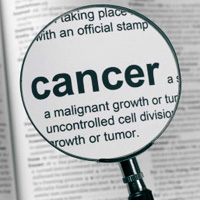Specialist management of testicular cancer: Report of the last 10 years at a Portuguese tertiary referral academic centre

Accepted: March 5, 2021
All claims expressed in this article are solely those of the authors and do not necessarily represent those of their affiliated organizations, or those of the publisher, the editors and the reviewers. Any product that may be evaluated in this article or claim that may be made by its manufacturer is not guaranteed or endorsed by the publisher.
Authors
Objectives: To describe our experience on testicular cancer (TC) management, underlining the clinical/pathological scope, administered treatments, outcomes, and challenges. TC incidence is rising globally. The predominant histology is germ cell tumour (GCT). In most patients, orchiectomy is curative. Still, a significant proportion of patients will need further tailored treatment. Specialist Reference Centres have proven themselves successful in this setting. Published data regarding TC in Northern Portugal is lacking.
Methods: Retrospective review of consecutive TC patients at a specialist tertiary referral academic centre between January 2010 and December 2020. Statistical analysis was performed using the STATA® version 13.1 software. Multivariate logistic and survival analyses were performed.
Results: 125 patients met the inclusion criteria. The median age is 35 (28-40) years; 19% of patients had risk factors for TC – infertility being the most common (11%); 50% of patients wanted sperm cryopreservation prior to treatment; 68% of patients had stage I GCT, 16% stage II, and 17% stage III. Compared to seminoma, non-seminomatous GCT were associated with younger age (p < .001) and higher stages at diagnosis (p = .02); 24% of stage IA/B GCT underwent adjuvant chemotherapy; 47% of patients with metastatic GCT at presentation had refractory disease, requiring tailored treatment. The median follow-up time is 33 (13-65) months. There was no late relapse. The 5-year OS rate is 98.0%. The 5-year survival of metastatic disease is 95.8%.
Conclusions: Despite contemporary excellent cure rates, the challenges of testicular cancer management still endure, especially in advanced stages. Therefore, public awareness is recommended, in order to avoid late presentations - special attention should be given to those who have known risk factors. The existence of Reference Centres is of paramount importance in order to achieve the best outcomes possible.
How to Cite
PAGEPress has chosen to apply the Creative Commons Attribution NonCommercial 4.0 International License (CC BY-NC 4.0) to all manuscripts to be published.

 https://doi.org/10.4081/aiua.2021.2.153
https://doi.org/10.4081/aiua.2021.2.153



